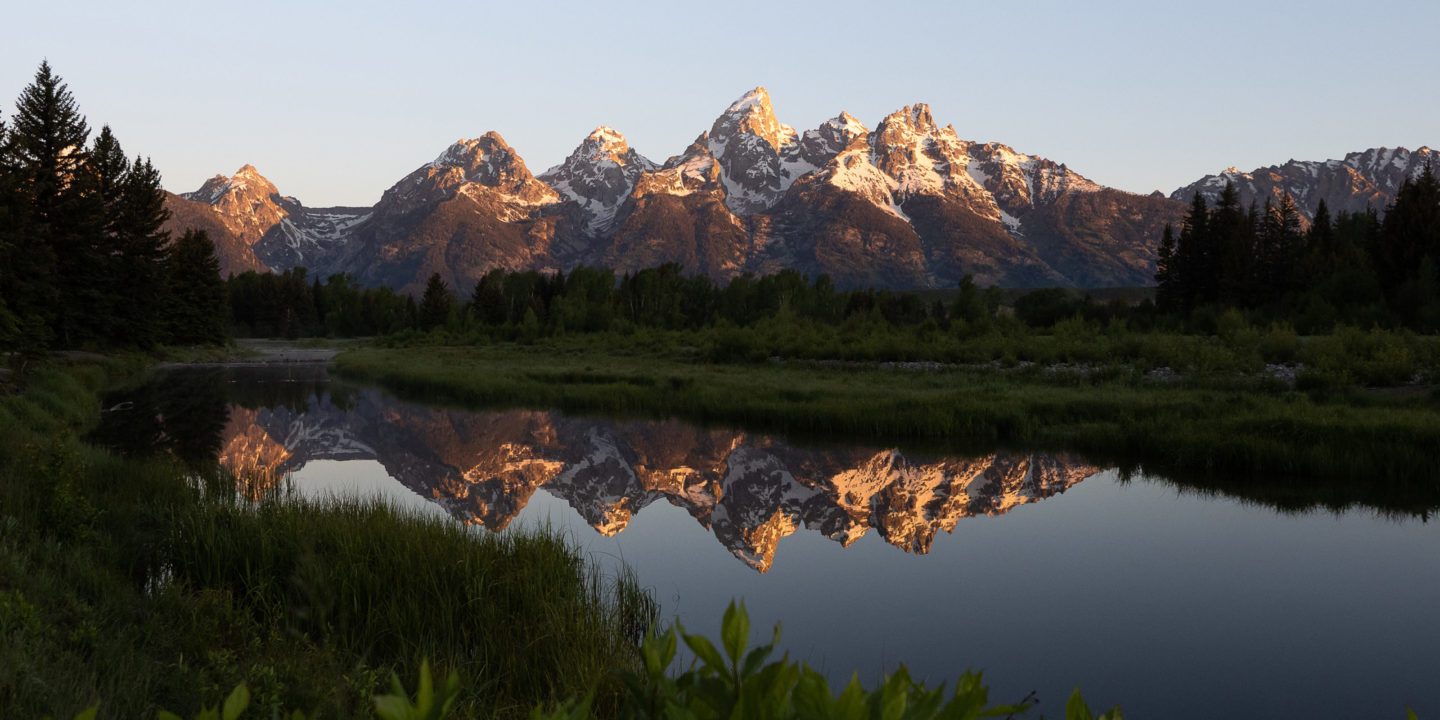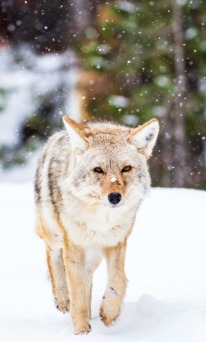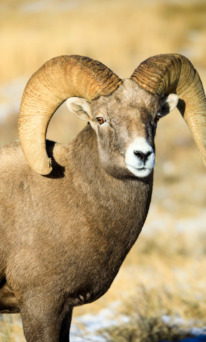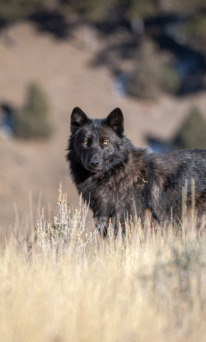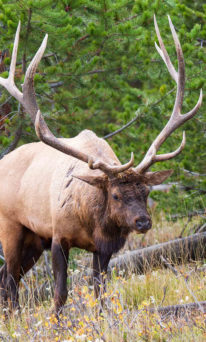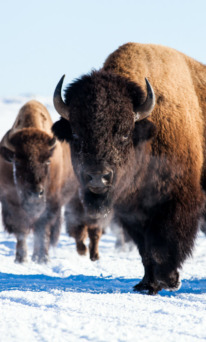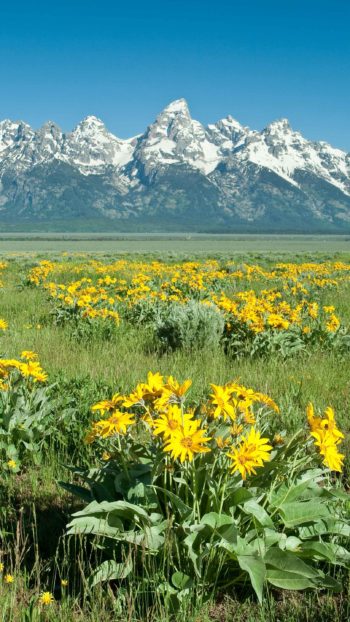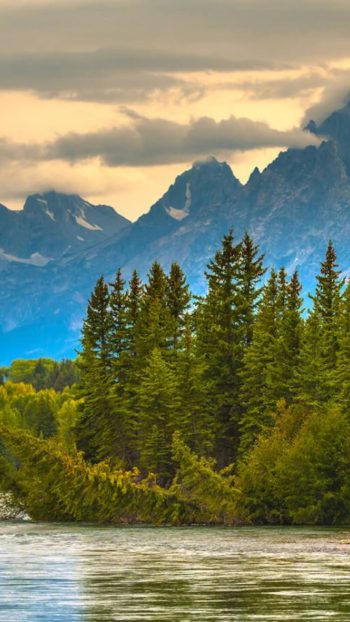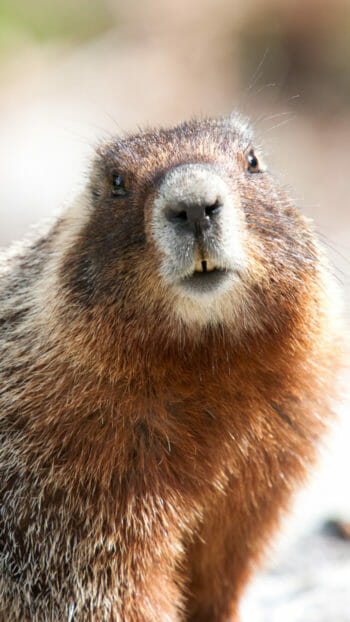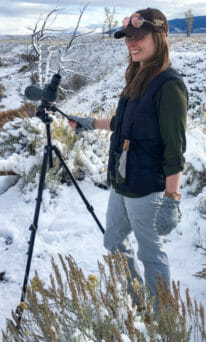“The only constant in life is change” are wise words by philosopher Heraclitus and are particularly true as we move through the year in Grand Teton National Park.
Grand Teton experiences very distinct seasons that see annual phenological cycles in the ecosystem. Phenology is the seasonal timing of things; birds migrating, flowers blooming, breeding seasons taking place, are all examples of phenology. Each and every month has something special to note, meaning that no matter what season you visit will be a special time. Use this guide to determine what time of year aligns best with what your interests and goals are!
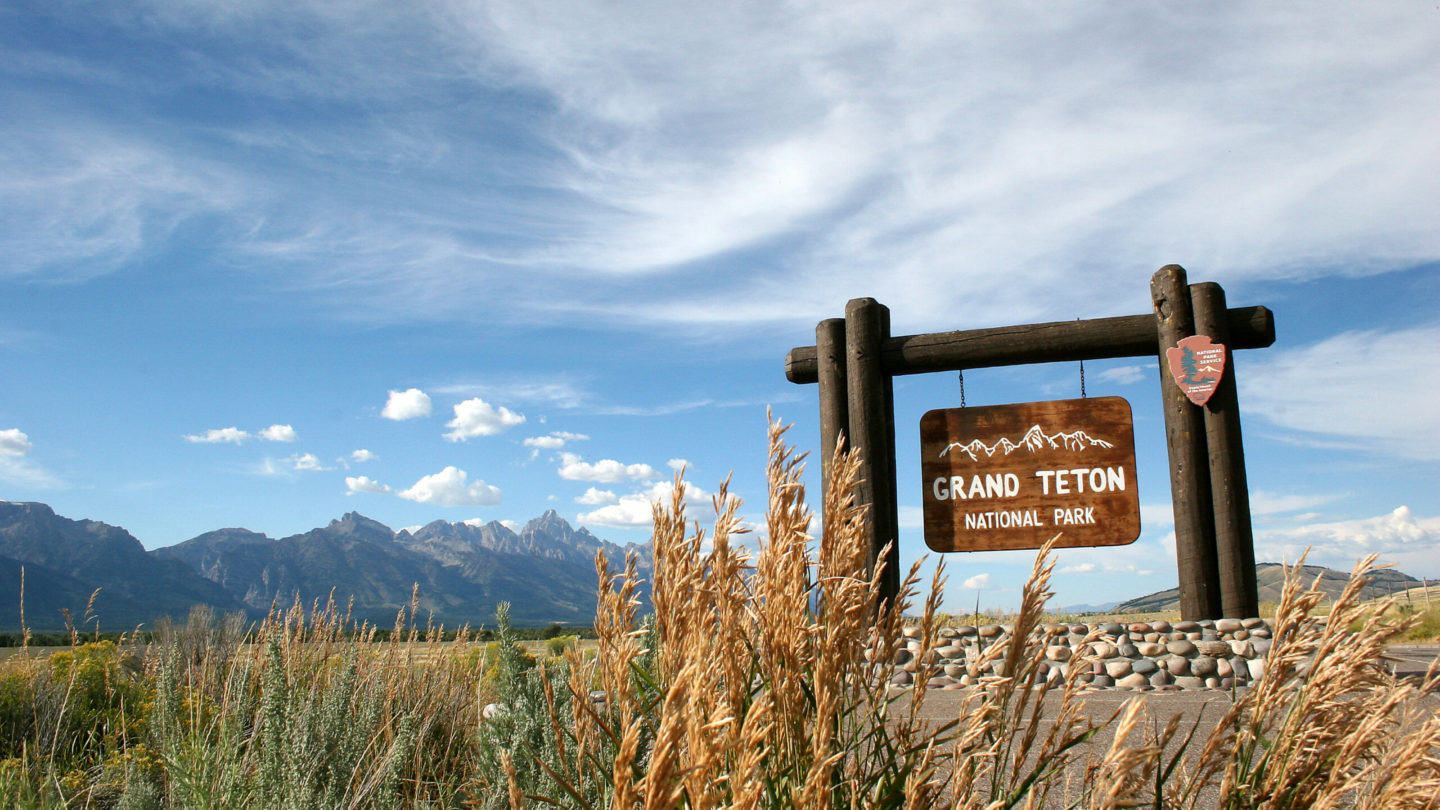
January
The first month of the year is very quiet in Jackson Hole and Grand Teton National Park, which is a fantastic time to escape the hustle and bustle of everyday life and find reprieve. The fall of winter’s snowy blanket muffles the din of our busy world, inviting you to slow down and recharge. Jackson Hole’s ski season is typically in full swing, and other winter activities like snowshoeing and cross country skiing are welcomed on the trails. Despite the bitter cold and heavy snowfall, plenty of wildlife can be found upon the landscape as they tough out the season. Be sure that you come prepared with warm layers, a durable waterproof insulated coat, and waterproof winter boots as you explore the park and watch for wildlife. Animals like coyotes and wolves can be easier to spot on the white snowy backdrop, and bighorn sheep thrive during winter in close proximity to town! When traversing the park in the winter months, it’s important to note that you cannot complete the full loop of Grand Teton as a section of the inner park loop is closed to vehicular traffic. You are still welcome to venture down this road on foot!
February
If you’re looking for a romantic getaway during the month of love, look no further than Jackson Hole and Grand Teton! Not only does the winter weather encourage cozying up by the fire, but several of our endearing wildlife species breed during this month. You may get the chance to see courtship behaviors of wolves, coyotes, and foxes. Bison are a treat to encounter in the snow, and the Elk Refuge will be full of wintering elk herds. Remember to dress in winter layers and keep your waterproof, insulated jackets and boots on hand for likely below freezing temperatures, and potentially deep negatives. Enjoy a day of enchanting wildlife watching before retreating indoors for a delicious romantic meal in town.
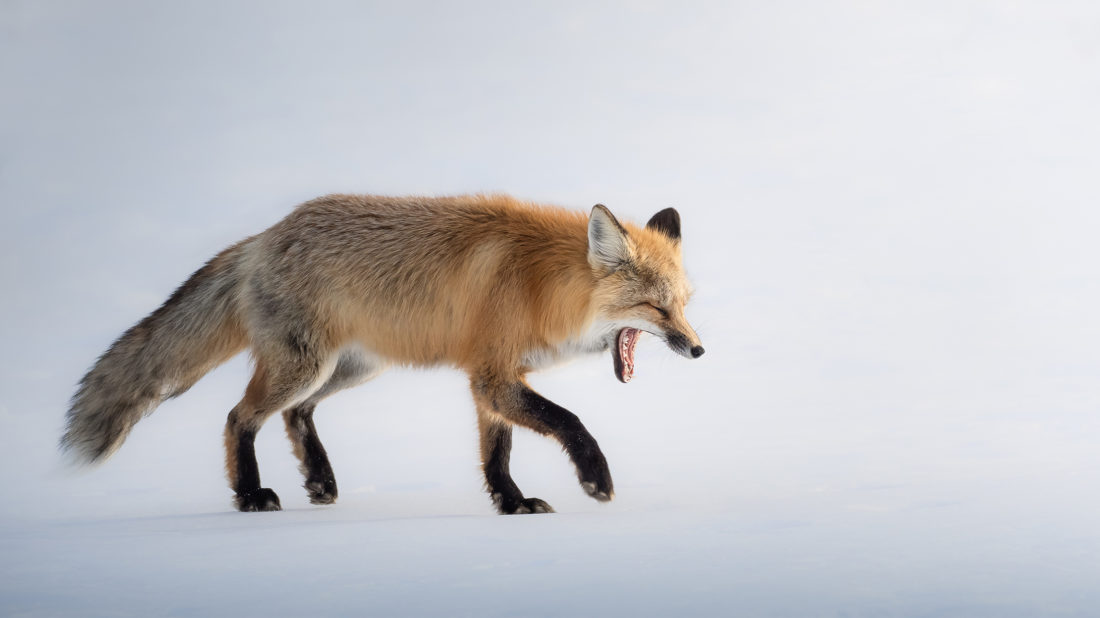
March
March is when we start seeing the first hints of spring. Warm weather is a long way off but temperatures creep up above freezing just enough to begin thawing the deep freeze that has gripped Grand Teton. Sunny, blue sky days brighten the winter scene and create encouraging conditions to get outdoors in search of adventure. When you’re not skiing, hop aboard a horse drawn sleigh ride for a tour of the Elk Refuge and a close up experience with the herds. You’ll still want to wrap up warmly, and don’t put away those waterproof boots just yet! Melting snow creates wet and slushy conditions so the right gear is important to keep your adventures going. This is the time that bull elk begin to shed their antlers. Moose and deer have shed their antlers months prior, but elk hang on to them much longer. Almost right away, they will begin regrowing their next set that will be fully formed in September!
April
April is considered the ‘shoulder season’ in this popular destination. This is the transition between the winter and summer seasons where visitation is low and the town becomes very quiet. The weather is still cool with some sunny days and the bears are beginning to appear on the landscape again! Male bears are the first to emerge from hibernation and begin searching for food. The elk start their annual migration north, out of the refuge. They slowly move up through the park and towards Yellowstone as the vegetation comes back following the melting snow. As the valley is surrounded by high elevation habitat, the deeper snow higher up concentrates the wildlife on the valley floor creating excellent conditions for wildlife watching! As we are in the mountains, keep your winter coats on hand as the weather can be very unpredictable and snow is never out of the question!

May
May is the beginning of our summer season, and it starts with a bang! The inner park road opens to vehicular traffic, making it possible to drive the whole loop again. The valley becomes greener and animals are giving birth. This is the month for babies- elk, moose, and bison are calving, and female bears with cubs are the last to emerge from their dens in the second half of the month. May generally has favorable weather but snow flurries are possible. Expect cold mornings and evenings with temps warming in the afternoon. Get out for a walk or simply step outside of your vehicle to enjoy the melodies of the summer warbler songs and revel in the sounds of summer. The Moose-Wilson road opens this month depending on conditions, opening access to the park from Teton Village.
June
June is the sweet spot between warm summer conditions and slower visitation to the region. Avoid the height of the crowds and enjoy the fair weather. Watch a herd of bison graze in the meadows while their newborn calves, affectionately called “red dogs”, frolic playfully. Pronghorn antelope return from their winter range farther south and become a common sight in the open grasslands. Here, they have their fawns- usually twins! Wildflowers begin to appear. Indian paintbrush, lupin, and arrowleaf balsamroot spackle the valley with a pop of color. Lace up your hiking shoes and hit the trails, or grab a fishing pole and spend the afternoon by the river.
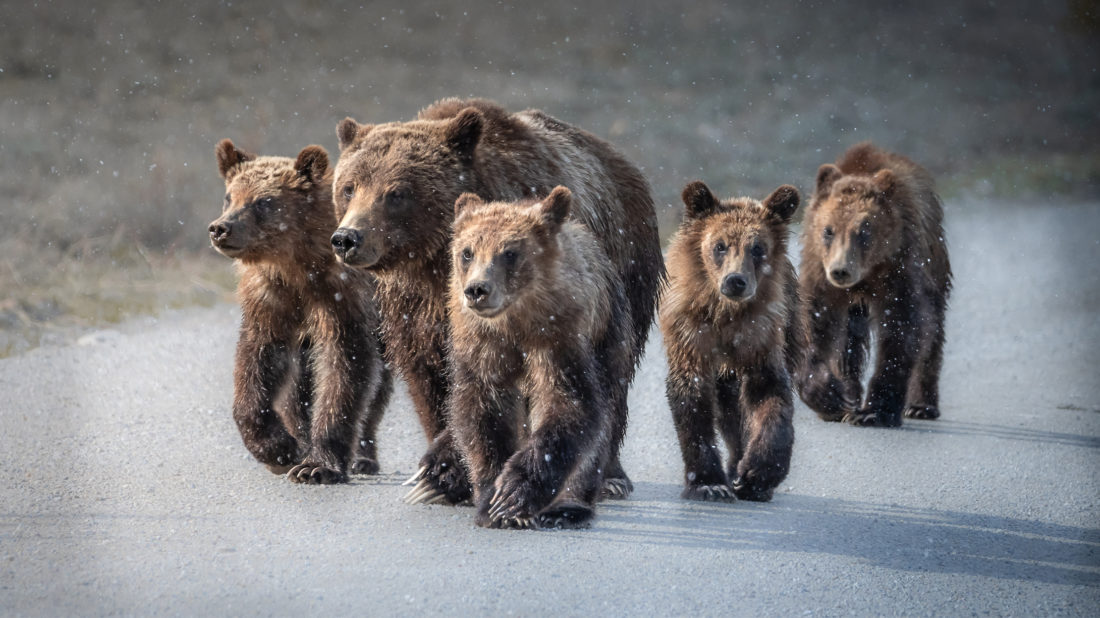
July
July is when things heat up! This is typically the hottest month of the year in Grand Teton. While mornings and evenings generally remain cool, afternoons can see temperatures of 90F! The remaining snow in higher elevations begins to melt, opening up access to higher hiking trails. This is one of the most popular months to visit, so crowds can build up in certain areas. Hiking trails can get crowded, parking for popular trailheads like Jenny Lake, Phelps Lake, and Lupine Meadows can become very difficult during the day, and lines can back up at the park entrance gates. The trick to navigating the crowds is to avoid peak times. It’s worth it to get up early to secure parking and have a quick and easy entrance to the park. While there is never a bad time to take a safari, one of the best ways to navigate the busy season is by booking a trip with Jackson Hole Wildlife Safaris. Hiring a professional guiding service can help you attain the best experience in the park and gain insight into navigating the crowds.
August
Much like July, August is very popular. This is usually the driest month of the year which can exacerbate wildfire risks, so keep an eye on fire warnings and adhere to any campfire bans. Because of the hot days, wildlife sightings can be a little more difficult than the previous cooler spring months. Moose have little heat tolerance and keep to dawn and dusk hours, spending most of their time in the shelter of the forest or cooling off in water. Bears and elk tend to move up in elevation into the mountains for cooler air and better forage. Despite the high temperatures, this is the best time to experience the great American Bison. This is the height of their rut, or breeding season, and they become extremely active, vocal, and aggressive. Males engage in vicious competition with each other for breeding rights with females. They can fight for hours in a spectacular display, kicking up clouds of dust and sending fur flying into the air, sometimes fighting to the death.
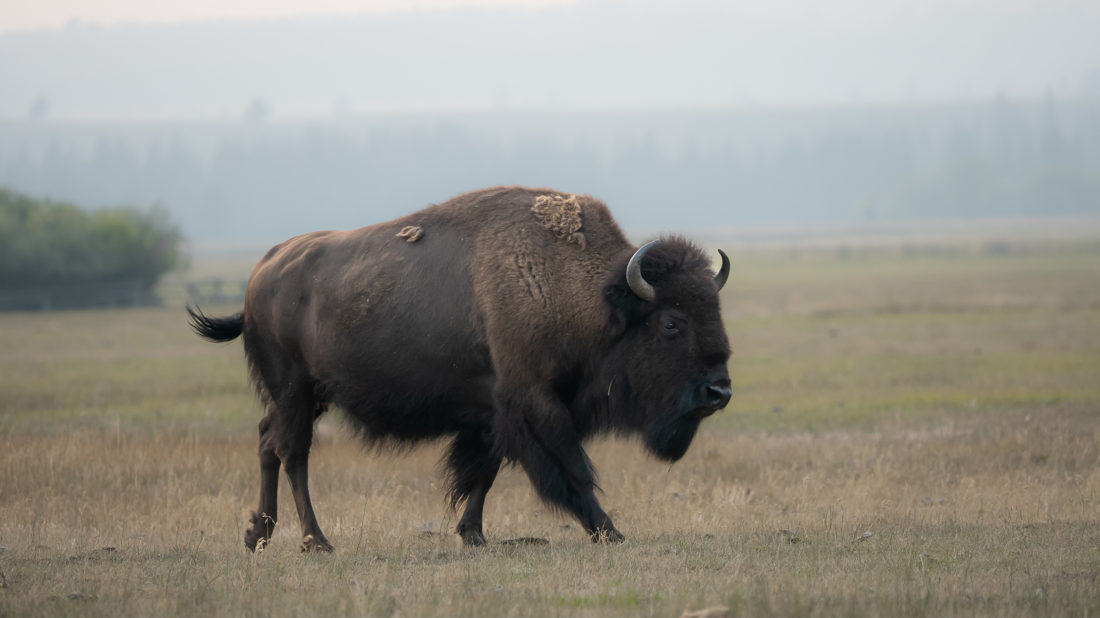
September
September is a month that brings regular visitors back time and time again. The daily high temperature varies greatly with the transition from summer to fall, and the crowds disperse as the school year begins. The leaves of the cottonwood and aspen trees begin to change to a golden yellow, splashing color across the valley. Cooler temperatures mean you’ll want to have your warm jacket on hand again, but it also makes the animals more active! As the summer heat wanes, moose spend more time in the open, bears come back down to lower elevations, and the elk are entering the height of their rut. Bull elk have fully grown their antlers and are ready to compete for the right to a harem of females, gathering in herds that can be seen from the roadside. This is the time to experience the magic of the elk bugle: a long, high-pitched call that bulls make only during the breeding season. It can be heard from a couple of miles away and creates an incredibly special atmosphere in the park. Bears are at the beginning stages of hyperphagia, meaning they are drastically increasing their caloric intake in preparation for the impending winter and their return to hibernation. This coincides with ripening berries throughout the ecosystem, so bear sightings are far more common now than midsummer as they raid the bountiful berry bushes.
October
Temperatures continue to cool and we could see some snowfall! Because of the elevation, the mountain peaks always get snow before the valley, creating wonderful landscape photos. Dress in layers to stay warm for the cold mornings and make it easy to adapt to a warm afternoon. The elk rut is still ongoing, but October is when the moose enter their season. In contrast to hot summer days where the moose is an elusive creature, it is possible to see several of them in a single morning or evening. Moose don’t congregate in such large numbers as elk, so you will only see them in small groups. Bears are still single-mindedly chowing down on berries, roots, and seeds. The fall colors are at peak now, a vibrant backdrop for all of your exciting wildlife encounters!
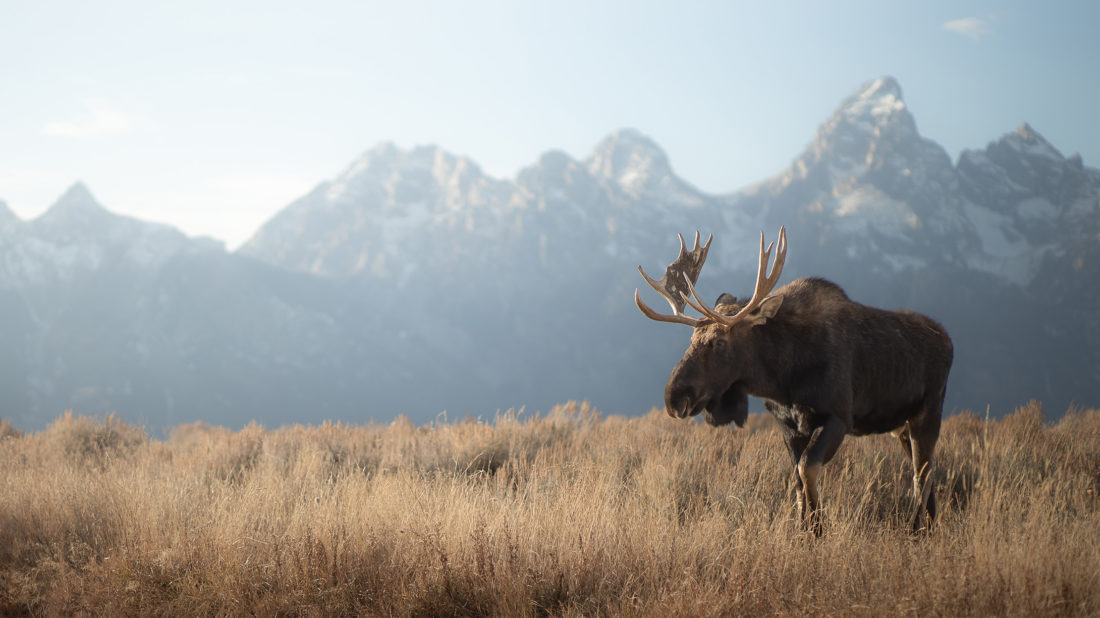
November
Another shoulder season on the other side of summer, November is a welcomed lull between summer adventurers and winter enthusiasts. Bears are beginning to vanish from the landscape as they retreat to their dens to hibernate for the winter. Elk begin their annual migration towards the National Elk Refuge where they will be visible until spring. The leaves have fallen and we prepare for colder temperatures. Don’t be discouraged from visiting the park in November, there are plenty of wildlife sightings and beautiful vistas to be enjoyed. Keep in mind many amenities in the park close for the season such as campgrounds, gas stations, and vault toilets. Some restaurants in town close for a couple of weeks for a much needed break and regroup for the next season. Plan ahead and don’t get caught out. When you book a safari, your guide can give you some valuable advice and information on how to navigate the quieter time.
December
Skiers eager to hit the slopes will be flocking to the mountains to get a start on the ski season, but there are many other activities in addition to winter sports. Take a horse drawn sleigh ride offered by the National Elk Refuge that takes you straight out onto the refuge and amongst the wintering elk herds. Explore the borders of the refuge to find Rocky Mountain bighorn sheep on the sheer cliff sides of buttes. By mid December, the winter season in Yellowstone begins and you can book a tour to take you there straight from Jackson! Tour by snowmobile or snowcoach, or opt for a slower pace and go snowshoeing in the middle of a winter wonderland. Enjoy moose in their favorite season, frosty bison plowing through the snow, and potentially exciting wolf sightings as they are in their prime!

Which Month is Best?
Deciding when to visit Grand Teton is entirely dependent on your personal interests, availability, and preferred weather conditions. Planning ahead is essential to managing expectations and anticipating what you may need. For example, if your number one goal is wildlife sightings of bears or moose, then midsummer may not be the best time for you to go. If you don’t want cold temperatures and wish to hike as much as possible, spring and fall may leave you disappointed. Every month is different and offers equally enchanting possibilities, but knowing what is and isn’t available will help you immensely. No matter when you visit, our wildlife safaris run year round and are sure to show you a spectacular time in the park!
In the Wild
Spotten on Safari
FAQs
What wildlife can be seen in Grand Teton National Park each season?
The best time to visit Grand Teton National Park depends on what you hope to encounter. In spring (April–May), moose are often seen near wetlands and grizzly bears emerge at lower elevations as animals return to summer ranges. Summer (June–August) brings calving activity for elk, mule deer, moose, and bighorn sheep, with predators such as bears, coyotes, and golden eagles frequently nearby. Fall (September–October) showcases dramatic migration and rutting behavior, with elk, moose, pronghorn, and bison on the move across the valley. Winter (November–February) offers rarer sightings—bull moose in their antlered phase early on, bighorn sheep descending into valleys, and deep-snow specialists like wolves, lynx, and wolverines traversing the snowy landscape, making each season a unique chapter in a month by month guide to Grand Teton National Park.
When do fall colors peak in Grand Teton National Park?
If you’re wondering when (the) fall colors peak in Grand Teton National Park, the best time to visit Grand Teton National Park for vibrant autumn foliage typically falls in the third week of September through early October. Fall colors usually begin in early September and continue into mid-October, with the most brilliant tones—think golden aspens, yellow cottonwoods, and bright shrubs—peaking in that late-September to early-October window, though exact timing varies year to year depending on the weather.
Is Grand Teton National Park accessible during the winter months?
Yes, Grand Teton National Park is accessible during the winter months, though access is more limited compared to summer. The best time to visit Grand Teton National Park in winter is from December through February for a true snowy wilderness experience. While some park roads close to vehicle traffic, main routes like U.S. Highway 26/89/191 remain open, offering stunning views of the snow-covered Teton Range. Winter visitors can enjoy cross-country skiing, snowshoeing, and wildlife viewing—spotting species such as moose, elk, bighorn sheep, and even wolves.
When is the best time for hiking in Grand Teton National Park?
The best time for hiking in Grand Teton National Park is during the prime window of summer through early fall—particularly from June through early October—when most trails are snow-free, roads and facilities are fully open, and trail conditions are reliable. This period aligns perfectly with your month by month guide to Grand Teton National Park, ensuring you maximize both accessibility and enjoyment across seasons without the delays or uncertainties of snow-covered paths.
Does road access change throughout the year?
Yes, road access in Grand Teton National Park changes significantly with the seasons. During the warmer months—typically late May through October—all main park roads are open, providing full access to scenic drives, trailheads, and visitor facilities. In winter, however, certain routes close to vehicle traffic due to snow, including the Teton Park Road between Taggart Lake Trailhead and Signal Mountain Lodge, which becomes a popular corridor for cross-country skiing and snowshoeing. Main routes like U.S. Highway 26/89/191 remain open year-round, ensuring visitors can still enjoy the park’s winter beauty as part of a month by month guide to Grand Teton National Park.
When do bears hibernate and reappear in Grand Teton National Park?
In Grand Teton National Park, most bears enter hibernation between late October and early December, retreating to dens as winter conditions set in. Grizzly bears are often the first to emerge, sometimes as early as mid-March, while black bears typically appear in April when food sources become more available. The best time to visit Grand Teton National Park for bear sightings is in spring and early summer, when they are actively foraging after hibernation—a highlight for wildlife enthusiasts following a month by month guide to Grand Teton National Park.

